Moldy durian shells can reduce quality and be harmful to health. Learn how to effectively identify, fix and prevent this condition.
Moldy Durian Shell
Durian mold is a common and serious issue in the durian cultivation industry. Mold on the fruit's skin not only reduces its quality but also impacts consumer health and causes economic losses for growers. To protect products and ensure customer satisfaction, identifying and addressing mold issues is essential. In this article, Sataka provides detailed information about the causes, effects, and solutions for durian mold, along with effective preventive measures.
1. Current Status of Mold on Durian Fruit
The issue of mold on durian fruit is becoming increasingly concerning in agriculture. As durians gain popularity and consumption rises, this phenomenon has become more prevalent. Mold on the fruit's skin not only affects the product's quality but also lowers its commercial value, causing significant losses for both growers and consumers.
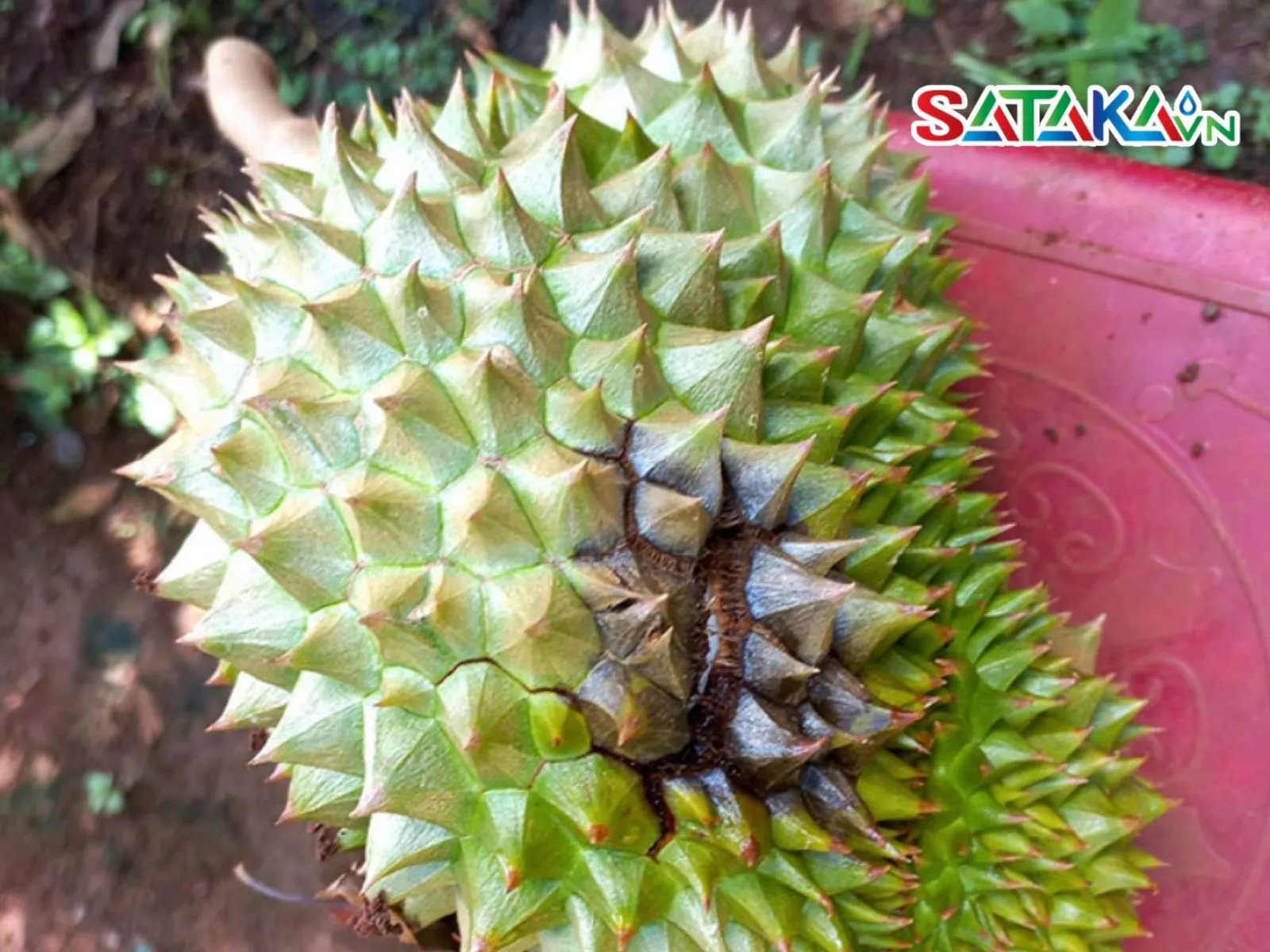
Durian shell has mold
This issue mainly arises when the fruit is damaged or improperly stored. Mold not only mars the fruit's appearance but can also affect its flavor and quality. The primary causes often relate to humid environmental conditions and the presence of bacteria or mold spores in the air or on the fruit's surface.
2. Causes of Mold on Durian Fruit
Mold on durian fruit can stem from various factors, categorized into objective and subjective causes:
2.1 Objective Causes
- Hot and humid weather: Such conditions provide an ideal environment for mold growth. In humid air, mold easily proliferates on the durian's surface, causing damage and reducing product quality.
- Pest infestations: Pests are one of the main causes of mold on durians. When pests damage the fruit's skin, it creates an entry point for mold to invade and develop.
- Improper harvesting and transportation: Inadequate practices during these stages can damage the fruit, facilitating mold growth. Physical impacts during transportation can cause cracks or abrasions on the fruit’s skin, making it vulnerable to mold invasion.
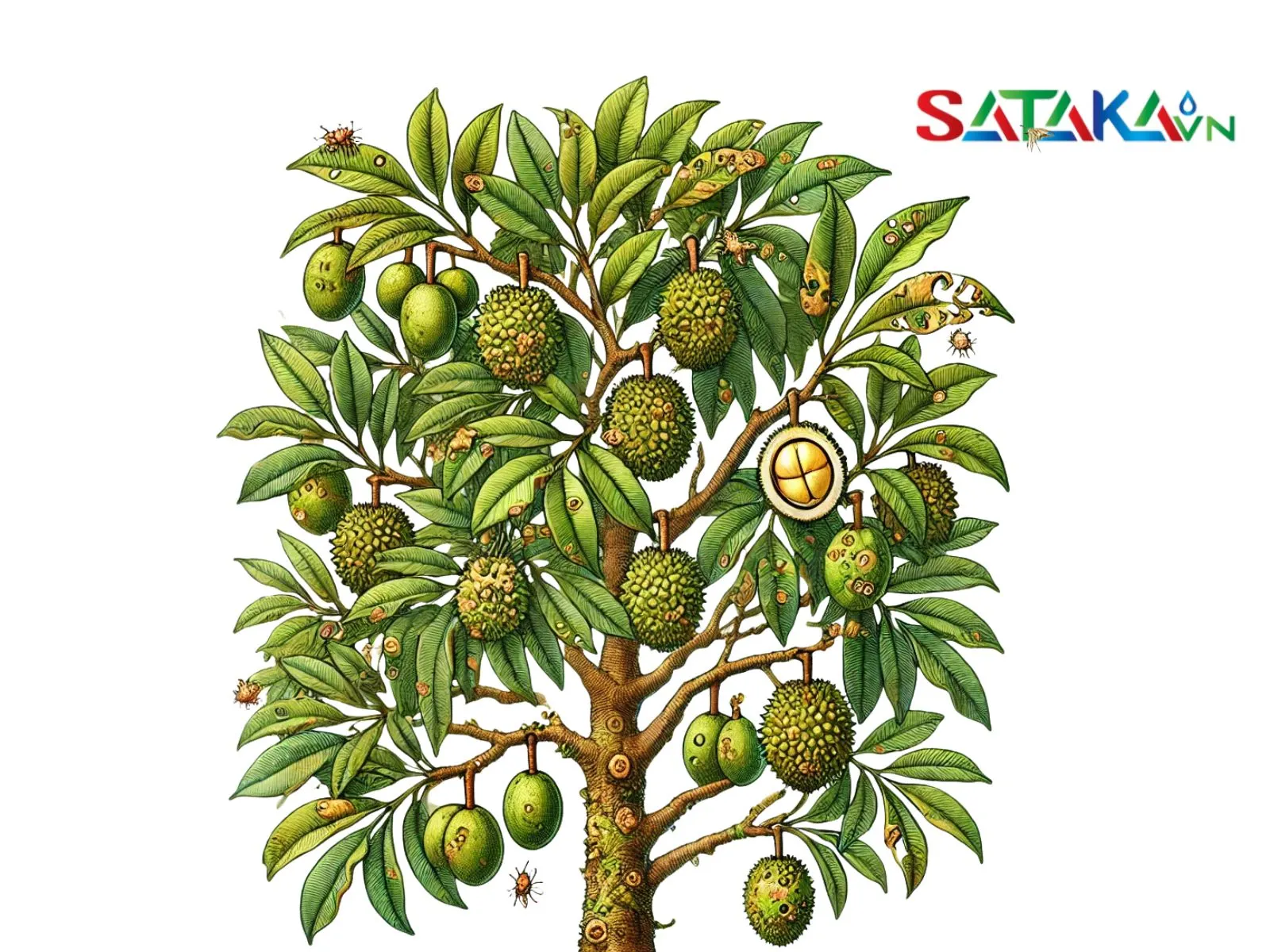
The durian tree has mold on its bark
2.2 Subjective Causes
- Improper storage (temperature, humidity, air circulation): Incorrect storage practices are a major reason for mold on durians. Inappropriate temperature and humidity levels can increase the risk of mold growth. Durians must be stored in cool, low-humidity environments to minimize mold risks.
- Insufficient cleaning of the fruit: Inadequate cleaning before storage is another significant cause of mold. If the fruit isn’t properly washed and dried, bacteria and mold can easily grow on the surface, compromising quality.
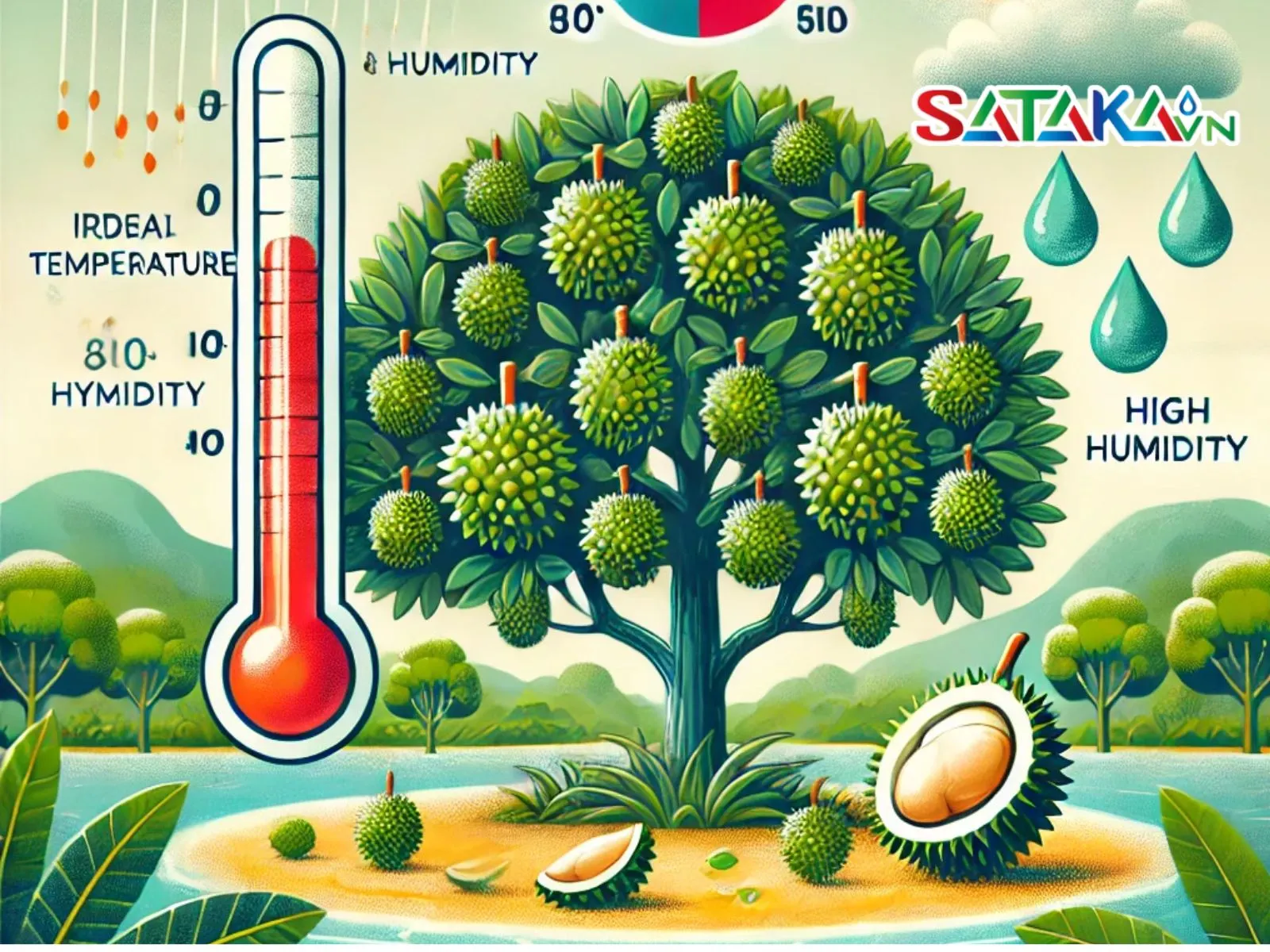
Durian trees stored at inappropriate temperatures have moldy fruits
3. Identifying Mold on Durian Fruit
Accurately identifying mold on durians is crucial to ensure product quality and safety.
- Appearance of white, gray, or black spots on the skin: These are clear signs of mold growth and should be addressed immediately.
- Soft and mushy skin: A soft, mushy feel when touching the durian skin indicates potential mold issues. Healthy durian skin should be firm and intact, while mold causes decomposition, leading to softness and deformation.
- Unusual odor: Moldy durians emit a strange, unpleasant smell, different from the characteristic aroma of fresh durians. If the durian no longer retains its natural fragrance but instead smells musty or foul, it is likely affected by mold.
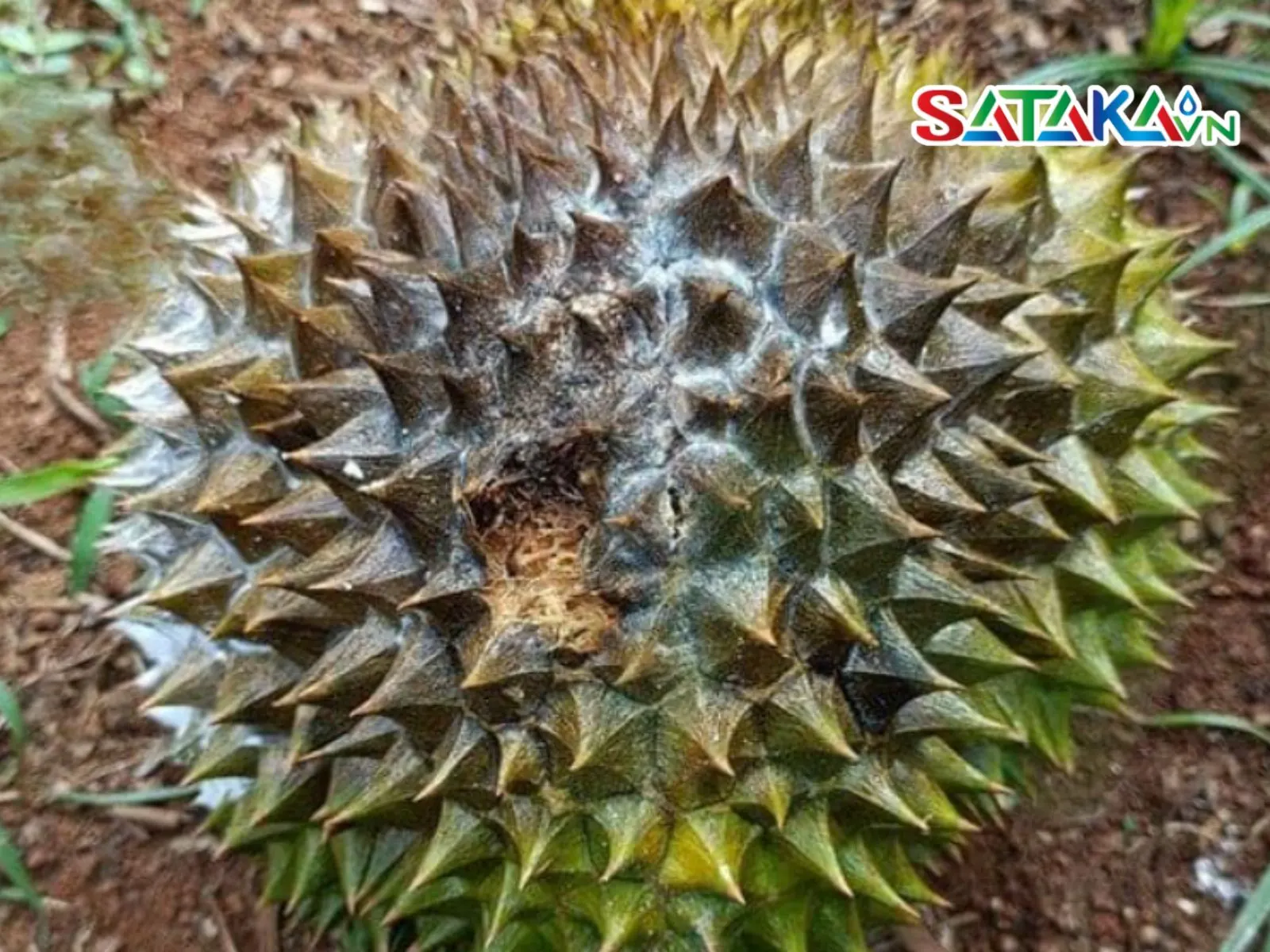
Identify durian with moldy skin
4. Effects of Mold on Durian Fruit
Mold on durian fruit impacts more than just its quality; it also poses significant risks. Below are the key effects:
4.1 Reduced Quality and Flavor
Mold significantly diminishes the fruit's quality and taste. It damages the skin and may infiltrate the flesh, resulting in a loss of freshness and the durian’s signature aroma. This reduces the fruit's appeal and commercial value, affecting customer satisfaction and the product's reputation in the market.
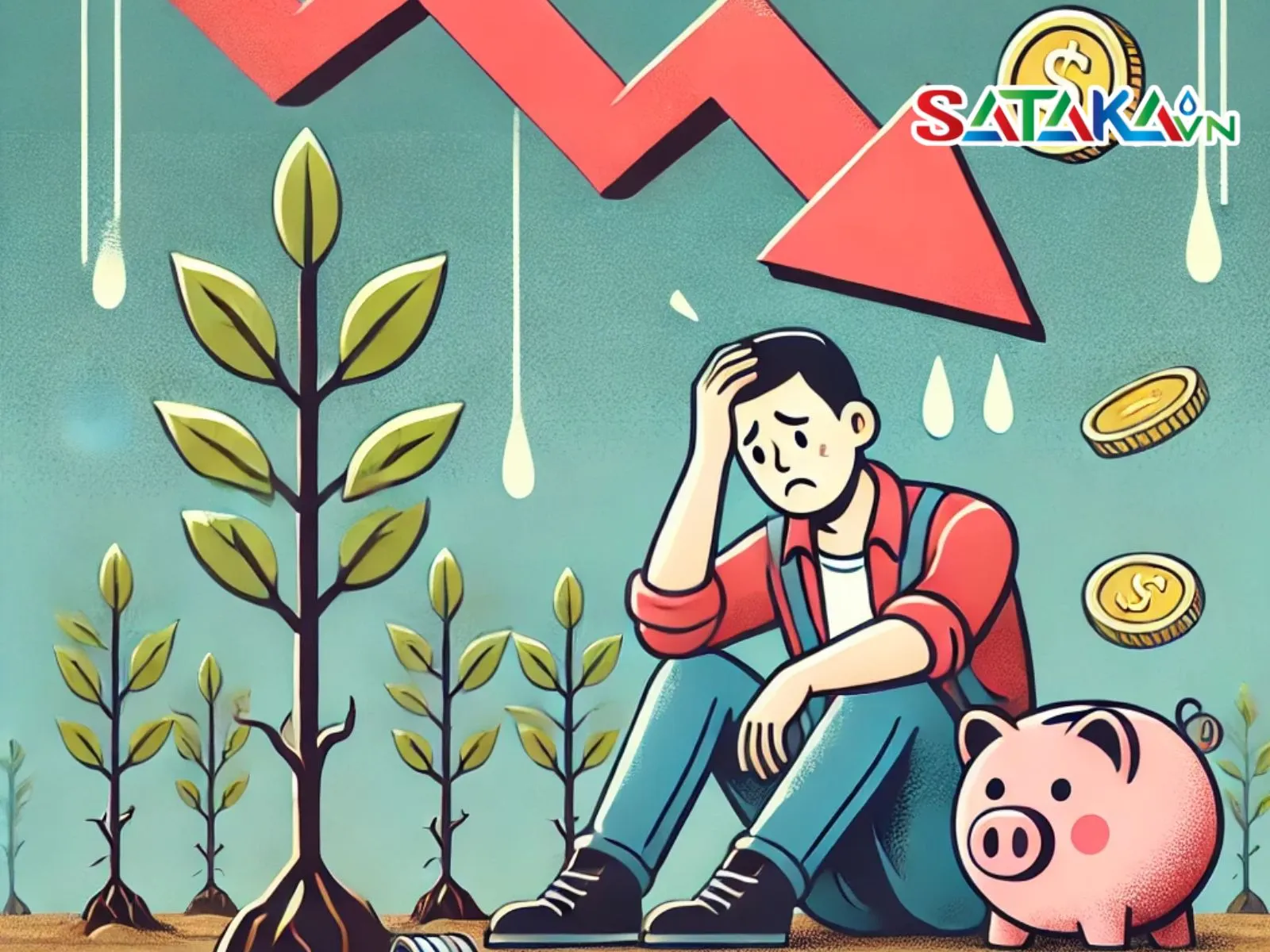
Causes economic loss
4.2 Health Risks to Consumers
One of the most serious effects of mold is the potential for food poisoning. Mold can produce harmful toxins that endanger health. Consuming moldy durians may cause symptoms such as nausea, diarrhea, and digestive issues. Ensuring consumer safety is paramount, and eating moldy fruit can lead to serious health risks.
4.3 Economic Losses for Growers and Sellers
Mold not only affects quality but also results in significant financial losses for growers and sellers. Damaged fruit reduces marketable stock and lowers the fruit's commercial value. This affects revenue for growers and reduces profits for distributors and retailers. The long-term impact of selling poor-quality products can harm business operations.
5. Solutions for Mold on Durian Fruit
To maintain durian quality and safety, addressing mold effectively is critical:
5.1. Identify the Cause
- Mold often arises due to humid environments, inadequate light, or fungal pathogens like Phytophthora.
- Inspect the entire tree and surrounding area to determine the exact cause.
5.2. Prune and Remove Infected Areas
- Cut away moldy or infected parts of the fruit, leaves, or branches.
- Collect and dispose of affected plant parts to prevent the spread of mold.
5.3. Use Plant Protection Chemicals
- Apply specialized fungicides containing active ingredients such as Metalaxyl, Mancozeb, or Copper Hydroxide to the infected areas.
- Follow application instructions carefully to ensure effectiveness and plant safety.
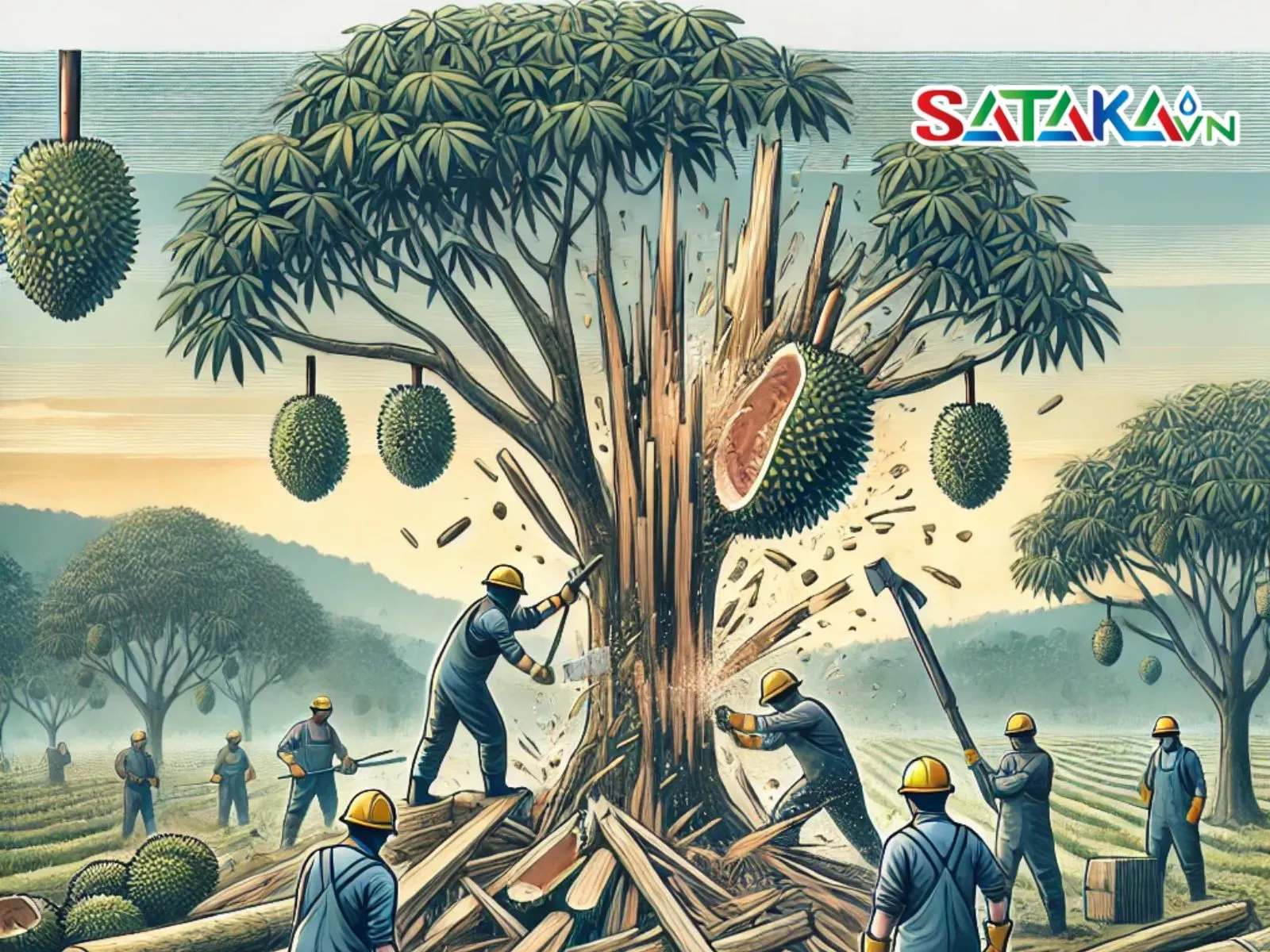
Remove durian trees with peel mold
5.4. Adjust Environmental Conditions
- Improve ventilation: Prune branches and maintain appropriate spacing between trees to reduce humidity.
- Watering control: Avoid excessive watering, particularly in the late afternoon. Water in the morning to allow adequate drying time during the day.
- Balanced fertilization: Provide sufficient nutrients, especially calcium and magnesium, to strengthen the tree's resistance.
5.5. Regular Monitoring
- Periodically check trees for signs of mold.
- Use preventive fungicides when early signs of mold appear or after treatment to prevent recurrence.
Implementing these steps will help durian trees recover and grow healthily.
6. Preventive Measures for Mold on Durian Fruit
Preventing mold is the best approach to maintain durian quality and reduce economic losses:
6.1. Choose Disease-Resistant Varieties
- Select durian varieties with high resistance to mold and diseases to improve product quality.
6.2. Apply Proper Care Techniques
- Irrigation and fertilization: Provide adequate water and nutrients without overdoing it.
- Pruning and maintenance: Remove diseased branches and monitor tree health to prevent infections.
6.3. Maintain Cleanliness in Tools and Environment
- Sanitize tools: Clean agricultural tools to prevent the spread of pathogens.
- Clean surroundings: Remove fallen leaves and broken branches to minimize mold risks.
6.4. Ensure Proper Transportation and Storage
- Prevent damage: Protect durian fruits from physical harm during transportation.
- Use appropriate packaging: Choose protective packaging and storage methods.
- Monitor storage conditions: Maintain ideal temperature and humidity levels in storage facilities.
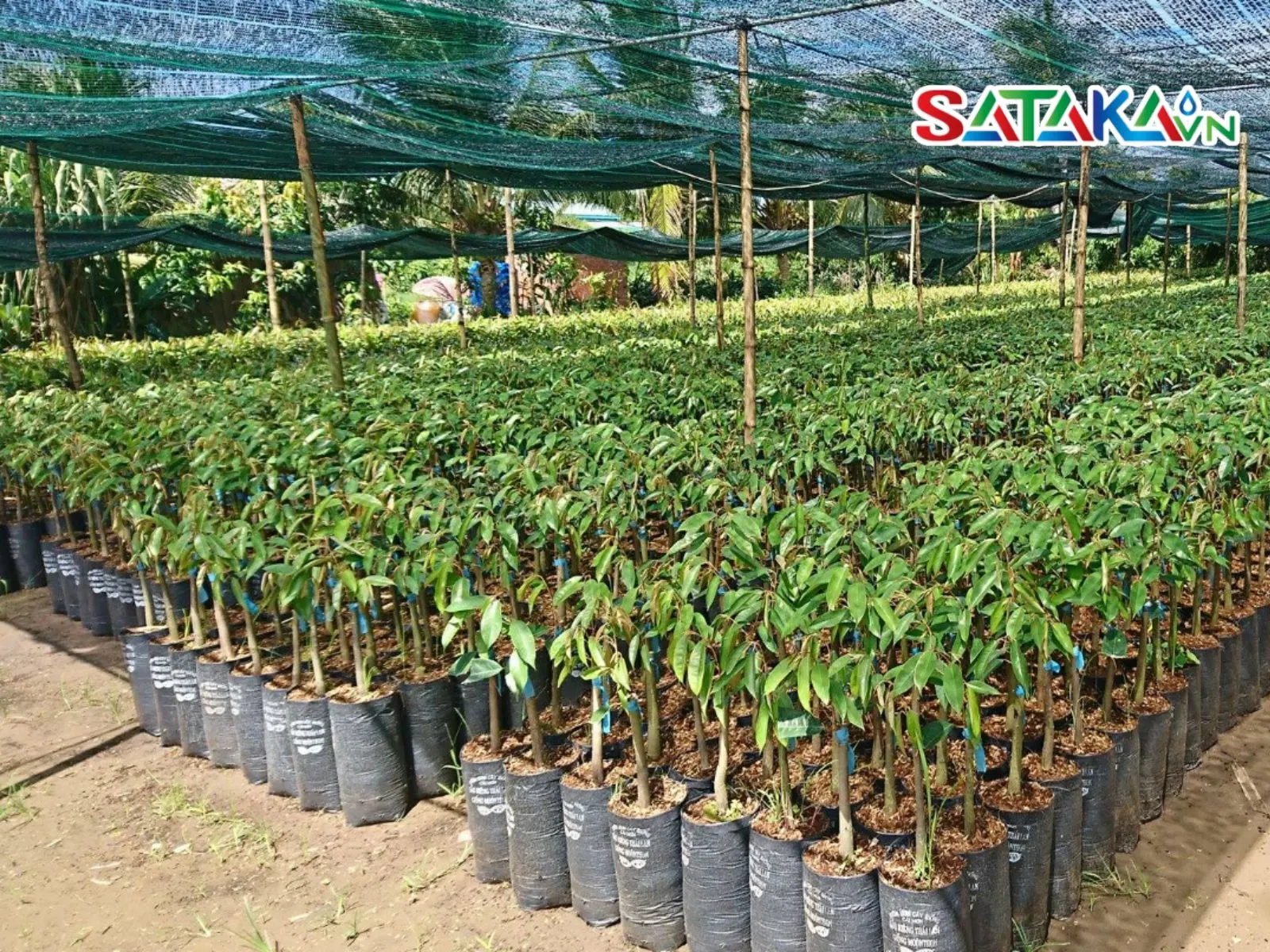
Choose disease-resistant durian varieties
Understanding and implementing preventive measures and solutions for mold on durians will help protect fruit quality and minimize economic losses. Using high-quality chemical treatments is indispensable for effective disease management. Sataka offers specialized chemical products to protect durian trees from mold and diseases, ensuring optimal yield and product quality. Contact us to learn more about effective solutions tailored to your needs!






